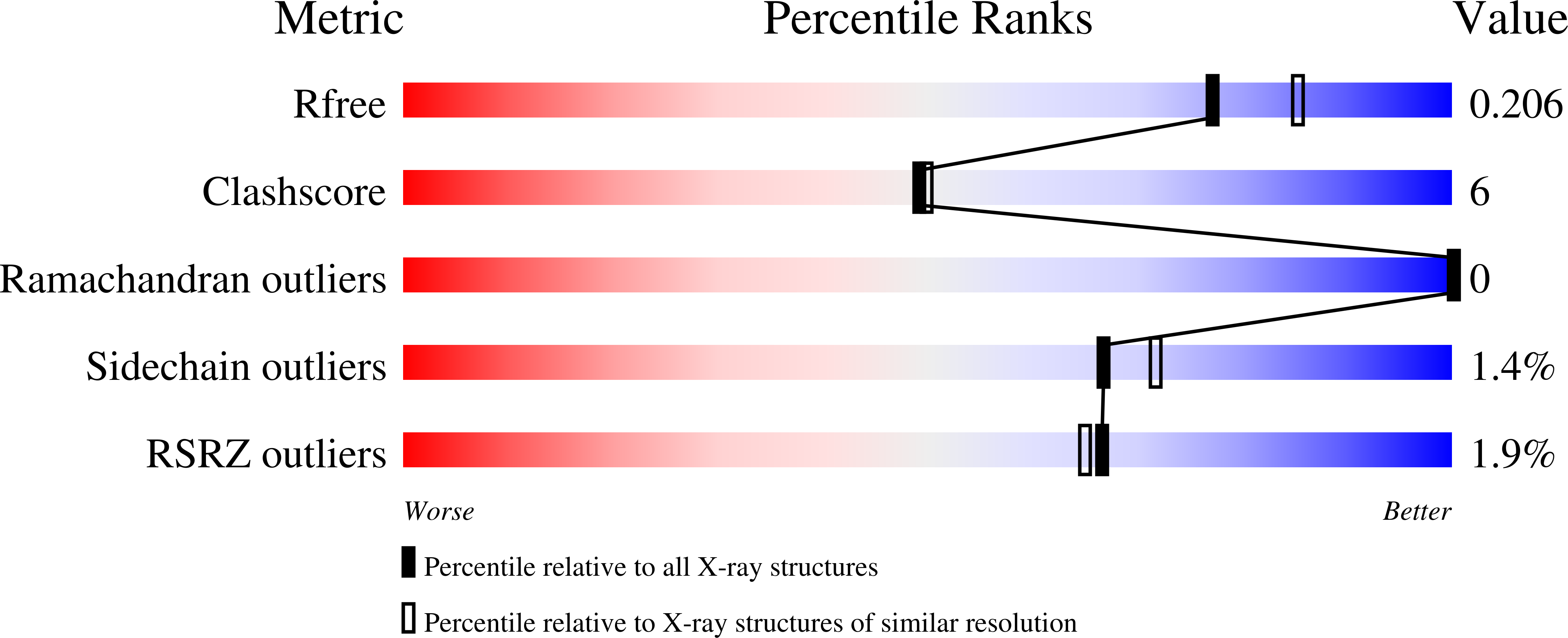Ubiquitin-like conjugation by bacterial cGAS enhances anti-phage defence.
Jenson, J.M., Li, T., Du, F., Ea, C.K., Chen, Z.J.(2023) Nature 616: 326-331
- PubMed: 36848932
- DOI: https://doi.org/10.1038/s41586-023-05862-7
- Primary Citation of Related Structures:
7UQ2 - PubMed Abstract:
cGAS is an evolutionarily conserved enzyme that has?a pivotal role in immune defence against infection 1-3 . In vertebrate animals, cGAS is activated by DNA to produce cyclic GMP-AMP (cGAMP) 4,5 , which leads to the expression of antimicrobial genes 6,7 . In bacteria, cyclic dinucleotide (CDN)-based anti-phage signalling systems (CBASS) have been discovered 8-11 . These systems are composed of cGAS-like enzymes and various effector proteins that kill bacteria on phage infection, thereby stopping phage spread. Of the CBASS systems reported, approximately 39% contain Cap2 and Cap3, which encode proteins with homology to ubiquitin conjugating (E1/E2) and deconjugating enzymes, respectively 8,12 . Although these proteins are required to prevent infection of some bacteriophages 8 , the mechanism by which the enzymatic activities exert an anti-phage effect is unknown. Here we show that Cap2 forms a thioester bond with the C-terminal glycine of cGAS and promotes conjugation of cGAS to target proteins in a process that resembles ubiquitin conjugation. The covalent conjugation of cGAS increases the production of cGAMP. Using?a genetic screen, we found that the phage protein Vs.4 antagonized cGAS signalling by binding tightly to cGAMP (dissociation constant?of approximately 30 nM) and sequestering it. A crystal structure of Vs.4 bound to cGAMP showed that Vs.4 formed a hexamer that was bound to three molecules of cGAMP. These results reveal a ubiquitin-like conjugation mechanism that regulates cGAS activity in bacteria and illustrates an arms race between bacteria and viruses through controlling CDN levels.
Organizational Affiliation:
Department of Molecular Biology, University of Texas Southwestern Medical Center, Dallas, TX, USA.
















